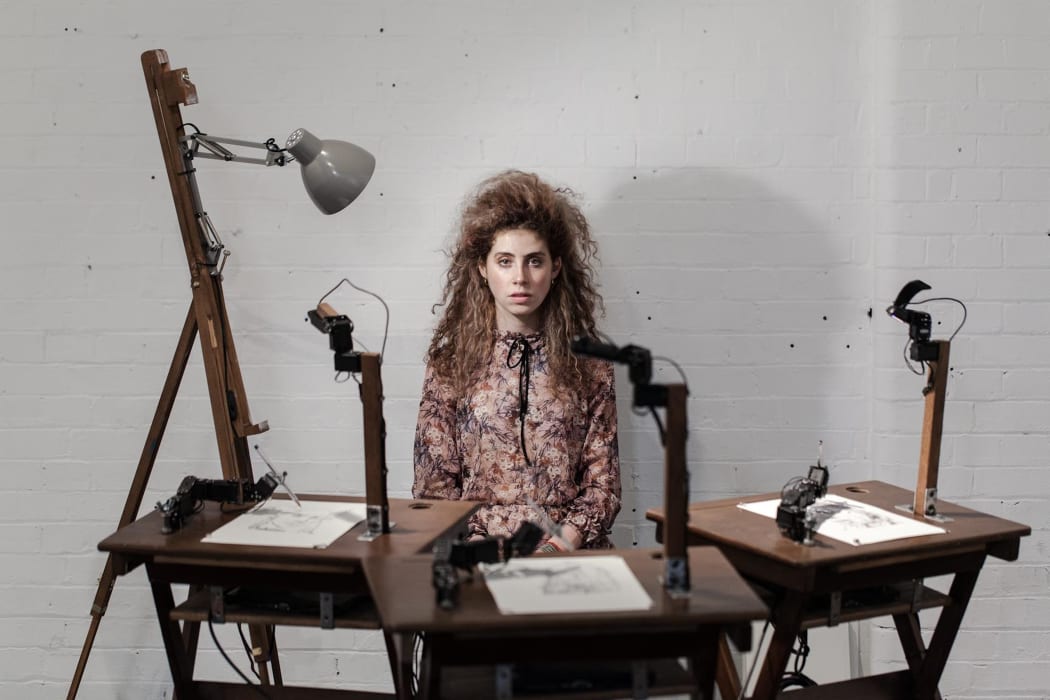
"We Are Here and Now" is an innovative exhibition that pushes the boundaries of contemporary art, challenging viewers to contemplate the essence of our being. Patrick Tresset's work invites the viewers to meaningful conversations about the human experience amidst the ever-evolving landscape of the Anthropocene.
Tresset’s exhibition includes a combination of performative installations with a robot trio drawing a sitter, and another where a single machine continuously draws a still life of the vanitas theme, a video triptych, revisiting the Memento Mori subject, and a series of monochrome machine-assisted paintings depicting humans.
It raises the question of people's perception when looking at machines that display human behavior and mark their presence through the traces left on paper. The complexity of this dualism can be seen in the reciprocity that takes place theatrically between robots and humans: the robots taking the place of an actor and the sitter of a subject. The artist creates robots that, through a form of mimesis, reveal human-like behavior and physical characteristics.
It's not about the technology or science - it's about the art, the scientific approach in his art, the artistic process, and a kind of dance between generative art and interaction with people. Thus, a combination of different principles that have created new artistic results. The result is an impressive theatrical robotic installation that combines art, science, and technology.
The creative process consists of a performance of portraiture created by a robot, which in turn requires the presence of people who become its models. Material components that live in symbiosis with a digital and technological immateriality, in turn, create a new product - a work of art on paper. The resulting drawings, created during the performance, were indeed put on paper by the machines, but the artist is the one who programmed and designed them. This reveals the hybrid nature of the artist united with his mechanical art.
The drawings require close analysis. They show a clear homogeneity of the drawing style, although each robot concentrates on the sitter's varying features and perceives its presence differently. In one sitting with the trio, three different drawings are created - each robot thus possesses its own drawing style and carries out a portrait differently. Here, too, a feeling of autonomy of the robots is created. But one is mistaken because the robots, like the actors, act after the given script.
Thus, no questions arise about the actual creator of these drawings or about the creative process of making them, but rather one finds that everything is in an organic congruence and close relationship between the artist, robot, sitter, and drawing. One only examines the relationship created in the process.
Patrick Tresset's installations, paintings, videos, and drawings invite viewers to reflect on their role in a rapidly changing world where technology continually reshapes our perception of existence. Patrick's practice can be considered in relation to French philosopher Jean-Paul Sartre's existentialist ideas and Bernard Stiegler's theories on the intimate relationship between humanity and technology.
Text by Cezara-Maria Casian

